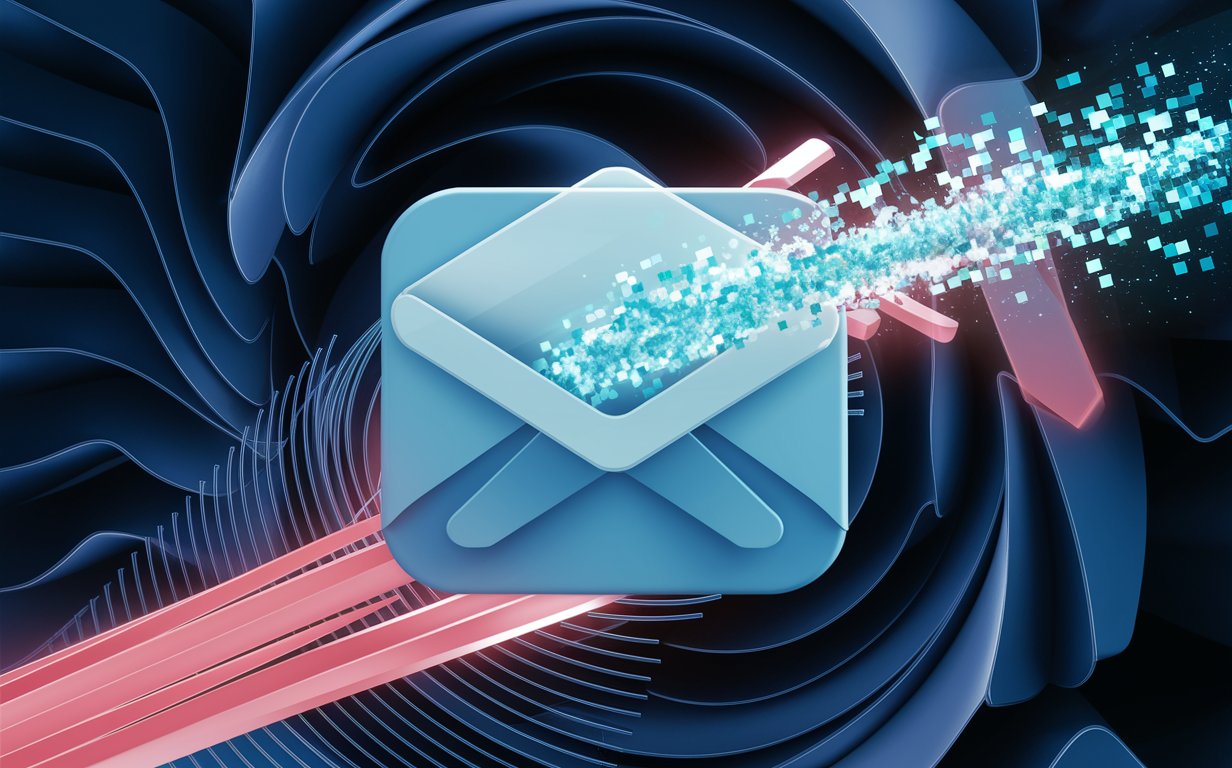Email is a common form of communication and is part of most people’s everyday lives. But did you know that it is also the most common way to spread malware?
Email is also a common way for cybercriminals to launch attacks on individuals and even businesses. So how secure are your email communications?
The good news is there are many ways to protect your email from malware and other attacks. Keep reading to learn how to secure your email communications.
1. Use end-to-end encryption
End-to-end encryption is a method of secure communication that prevents third-parties from accessing data while it’s transferred from one end system or device to another. It’s the most secure way to send and receive emails.
With end-to-end encryption, your emails are kept secret from the moment you send them until the moment they’re received, and nobody can access them except for the intended recipient.
If you’re using an email service that doesn’t have end-to-end encryption, you should consider switching to a more secure one. ProtonMail is a good option, and it’s free to use.
2. Use a secure email provider
Secure email providers take many of the security measures you’d normally have to worry about and handle them for you. That way, you can focus on the content of your emails, and not have to worry about whether or not they’re secure.
For example, secure email providers will encrypt your emails in transit and at rest. They’ll also use the latest security standards and protocols to keep your emails safe. And, they’ll offer features like two-factor authentication and email expiration to give you more control over your email security.
By using a secure email provider, you can ensure that your emails are protected from prying eyes and other eCommerce security threats, such as phishing scams that target online businesses.
3. Encrypt your emails
Encryption is the process of encoding your email messages so that only authorized recipients can read them.
There are two types of email encryption: symmetric and asymmetric.
Symmetric encryption uses a single key to encrypt and decrypt the email. This key is shared between the sender and the recipient. The main disadvantage of this method is that the key has to be shared between the sender and the recipient. If a third party gets access to the key, they can also decrypt and read the message.
Asymmetric encryption, also known as public-key encryption, uses two keys: a public key and a private key. The public key is used to encrypt the email, and the private key is used to decrypt it. The public key is shared with the sender, while the private key is kept secret by the recipient.
The main advantage of asymmetric encryption is that the public key can be shared with anyone. This means that anyone can encrypt a message to the recipient, but only the recipient can decrypt it using their private key.
To encrypt your emails, you can use email encryption tools like PGP (Pretty Good Privacy) or S/MIME (Secure/Multipurpose Internet Mail Extensions). You can also use a secure email service that encrypts your emails automatically, such as ProtonMail.
4. Use a secure password
This may sound obvious, but you’d be surprised how many people still use “password” as their password. And if you think adding a 1 or an ! is going to make it any more secure, think again.
The best way to create a secure password is to use a combination of letters, numbers, and special characters. And don’t use the same password for every account. If a hacker does manage to crack one of your passwords, they’ll have access to all your accounts.
5. Use a secure network
If you’re using a public Wi-Fi network to send emails, you’re putting your data at risk. Public Wi-Fi networks are not secure, and hackers can easily intercept the data sent over them.
If you must use a public Wi-Fi network, use a virtual private network (VPN) to secure your connection. A VPN encrypts your data and hides your IP address, making it much more difficult for hackers to intercept your emails.
6. Use a secure email client
Most people use email clients to send and receive emails. These are software applications that are installed on a user’s device to access their email account.
There are many different email clients available, including the most popular ones like Apple Mail, Microsoft Outlook, and Mozilla Thunderbird.
But not all email clients are created equal when it comes to security. Some offer more security features than others.
For example, some email clients offer end-to-end encryption, while others do not. Some email clients have built-in anti-phishing tools, while others do not.
When choosing an email client, it’s important to consider the security features it offers. Look for an email client that offers end-to-end encryption, built-in anti-phishing tools, and other security features to help you keep your email communications secure.
7. Enable two-factor authentication
Two-factor authentication (2FA) is a security measure that requires you to provide two forms of verification in order to access your account.
One form is your password, and the second form is usually a code that is sent to your phone. This helps to ensure that even if a hacker steals your password, they still won’t be able to access your email account.
Most email providers offer 2FA, and it is highly recommended that you enable it if you haven’t already.
8. Use a secure device
You should always use a secure device when sending emails. This means using a device that is password-protected, has the latest security patches installed, and has an up-to-date antivirus program installed.
If you are using a public computer or device, be sure to log out of your email account and clear your browsing history before you leave.
9. Keep your software updated
Software updates are often released to fix security vulnerabilities. If you don’t update your software, you’re leaving your email communications and your business open to attack.
Use an email security service that automatically updates with the latest security patches. This will help protect your business from new threats and vulnerabilities.
You also need to be picky about all softwares, especially your CRM which is the heart of your business. Choose ones that are SOC 2 compliant like Pipedrive, Hubspot or Close.
10. Use a secure cloud storage
If you need to send large files or a large number of files, consider using a secure cloud storage system such as Google Drive or Dropbox.
These tools allow you to upload files to the cloud and then share a link to the files with your recipient. This is much more secure than attaching the files to an email, as the files are not actually sent to the recipient.
Instead, the recipient must click on the link and log in to the cloud storage system to access the files. This ensures that only the intended recipient is able to access the files.
11. Use a secure email signature
Email signatures are a great way to show your professionalism and to make a good first impression. But did you know that they can also be used to make your emails more secure?
By using a secure email signature, you can add an extra layer of security to your emails. This can help to protect your emails from being intercepted and read by unauthorized parties.
There are several ways that you can make your email signature more secure. For example, you can use an email signature that includes an image of your company’s logo. This can help to prove that the email is legitimate and that it was sent by someone who is authorized to represent your company.
You can also use a secure email signature that includes a digital certificate. Digital certificates are electronic files that are used to prove the identity of the sender of an email. By learning how to make a digital certificate and including it in your email signature, you can help to prove that your emails are legitimate and that they were sent by you.
In addition to adding an extra layer of security to your emails, using a secure email signature can also help to make your emails look more professional. This can help you to make a good first impression and to build trust with your email recipients.
12. Send secure emails
If you’re sending sensitive information via email, you should encrypt it. Encryption encodes the content of your email so that it can only be read by the intended recipient. This is important because it means that even if your email is intercepted, the information it contains will be unreadable.
Most email services offer a way to encrypt your emails, often through the use of a password. Alternatively, you can use a secure email service like ProtonMail, which uses end-to-end encryption to keep your emails secure.
Conclusion
The above tips can help you protect your email communications, but they’re not the only ways. There are many other ways to secure email, including using email encryption software.




